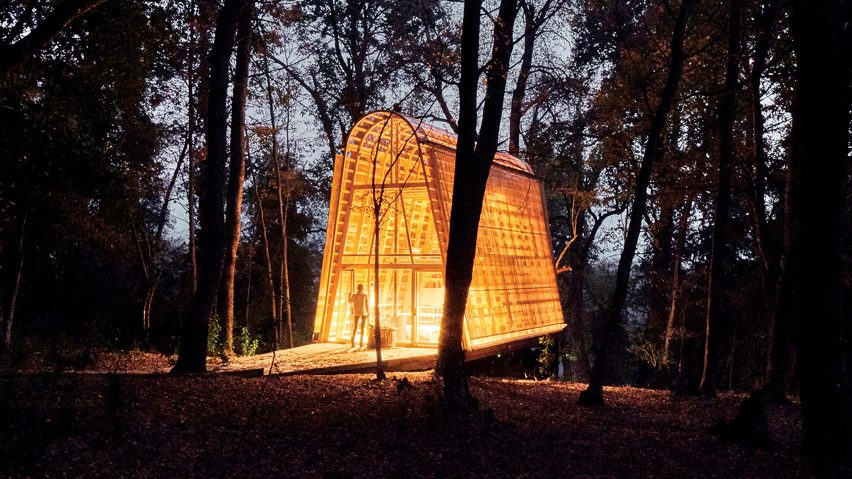
Small La Invernada cabin glows in Chilean forest at night
This house by Chilean studio Guillermo Acuña Arquitectos Asociados has mesh and polycarbonate walls to reflect the shadows of trees in daytime and light up at night.
Guillermo Acuña Arquitectos Asociados designed the 54-square-metre house to blend into its location in an area of Curicó, Chile, with a forest on one side and a river on the other.
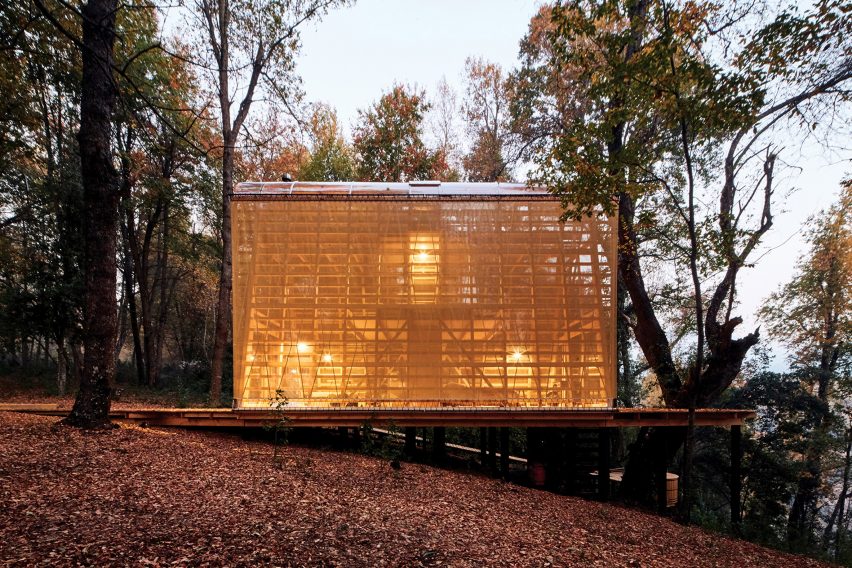
"The project was conceived as an object that doesn't belong to the site, that can disappear at any moment, and that talks to us of a transitory condition of occupation of the forest," said Guillermo Acuña Arquitectos Asociados (GAAA).

Called La Invernada, it has a laminated Chilean pinewood structure, walls of eight-millimetre-thick monolithic, flexible polycarbonate, and a protective mesh covering laid on top.
Shadows form on the golden-coloured mesh walls in the day, while at night they glow with artificial light.
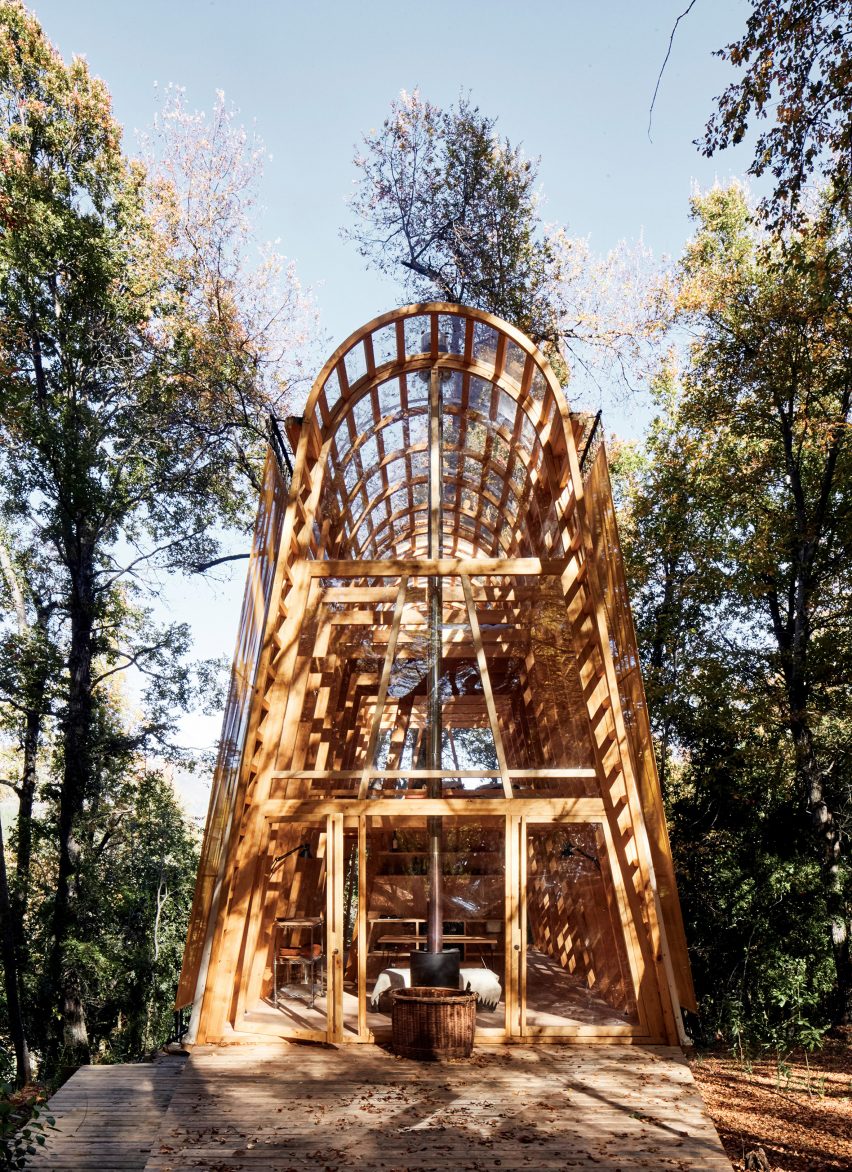
"Transparency plays with this impermanence as it reflects the projected shadows of the forest on its skin and the movements of it during the day," the studio explained.
"The textile layer takes on the role of tinting the light gold – the colour of the oak leaves in the fall – during the day, and acting as a sacrificial cover in storms, protecting the tent from hooks and branches that could crack the second layer, which protects from the rain."
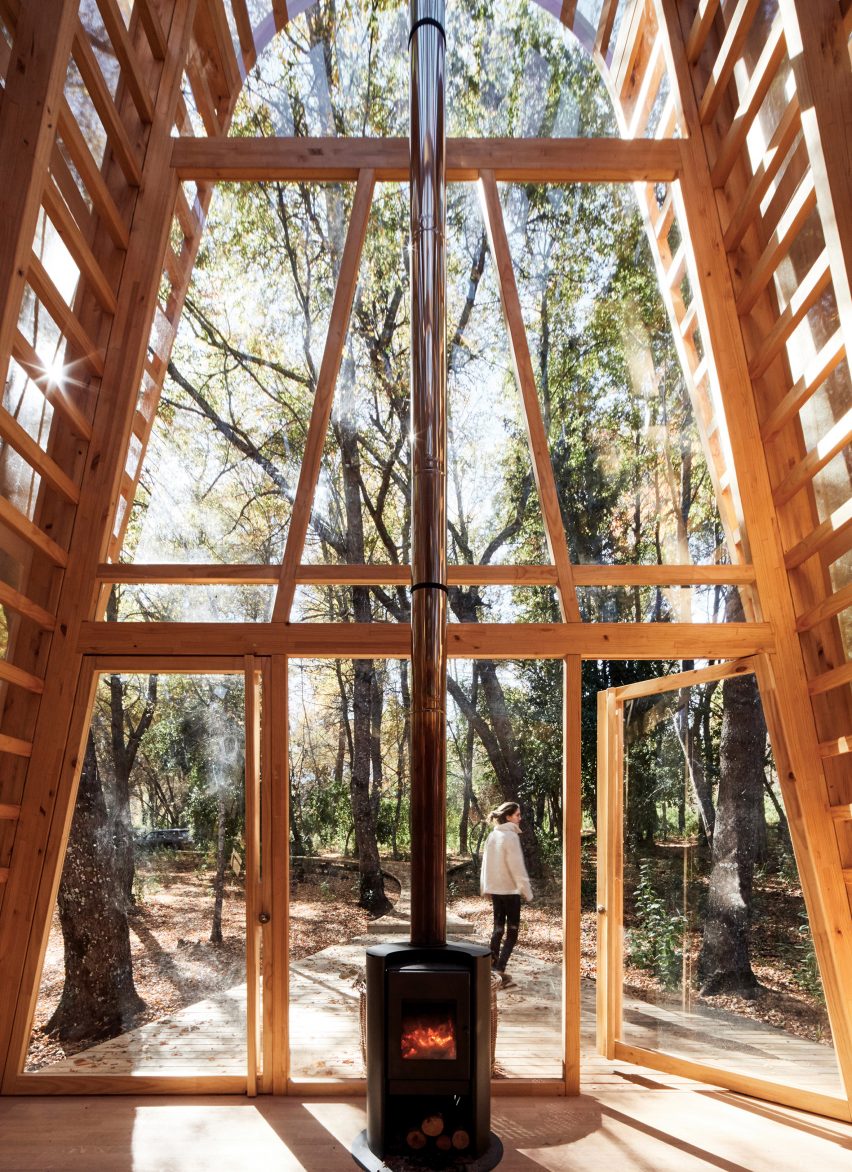
GAAA chose the three materials used to build La Invernada – laminated Chilean pinewood, polycarbonate and mesh – to represent layers in different elements of nature.
"We wanted to experiment with the 'Vegetal' as a working theme for the design, so the house had to fulfill the plastic attributes of that nature: light (photosynthesis) fabric (leaves) and wood (trees)," it explained.
The studio said the structure took a total of 20 days to build.
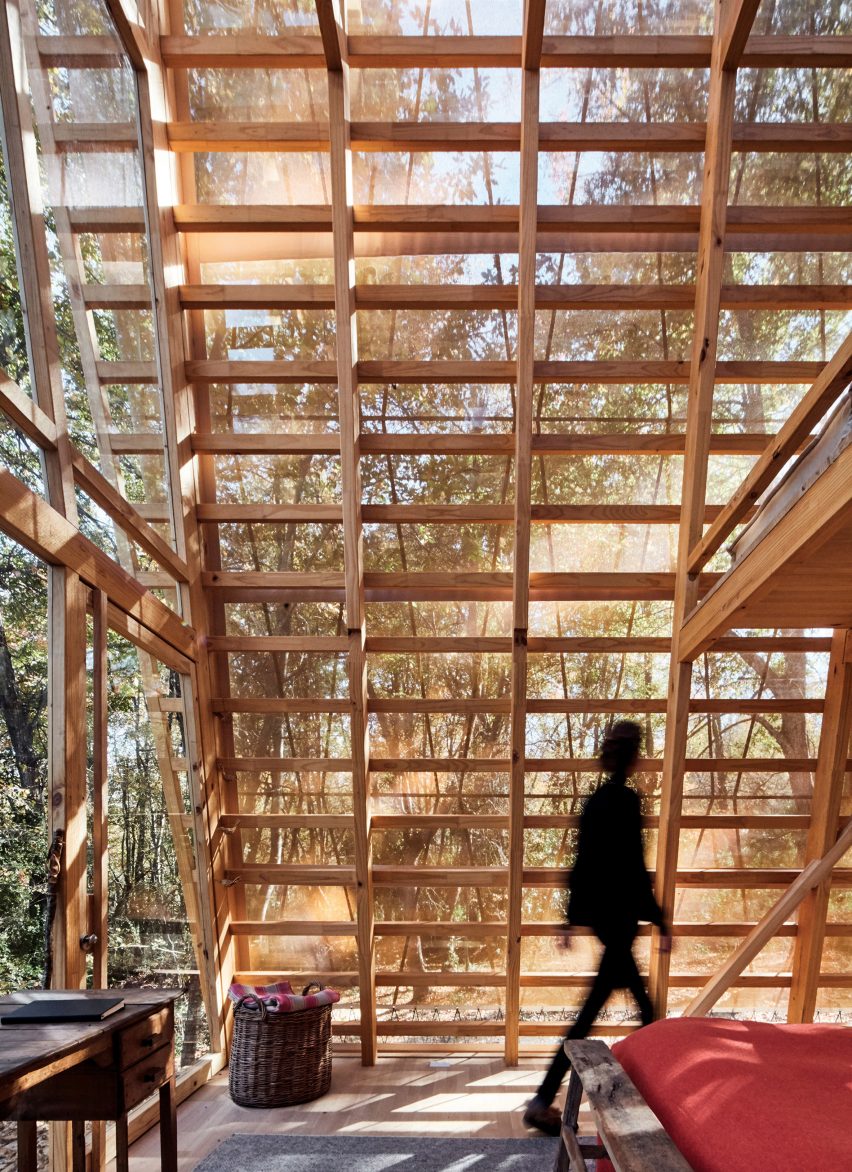
The pinewood was CNC-cut prior to building and then assembled on-site with wood joints and screws to form the curved roof and two slanted walls.
Polycarbonate was used for openings to allow daylight to flood into the house, and the mesh was hung along the longer walls.
La Invernada, which operates off-grid, is built atop a wooden deck that extends from the top of its sloped site to rest on stilts. It is accessed from a wooden path threaded through the woods and breaks off at the entrance to lead down the slope to a bathtub.
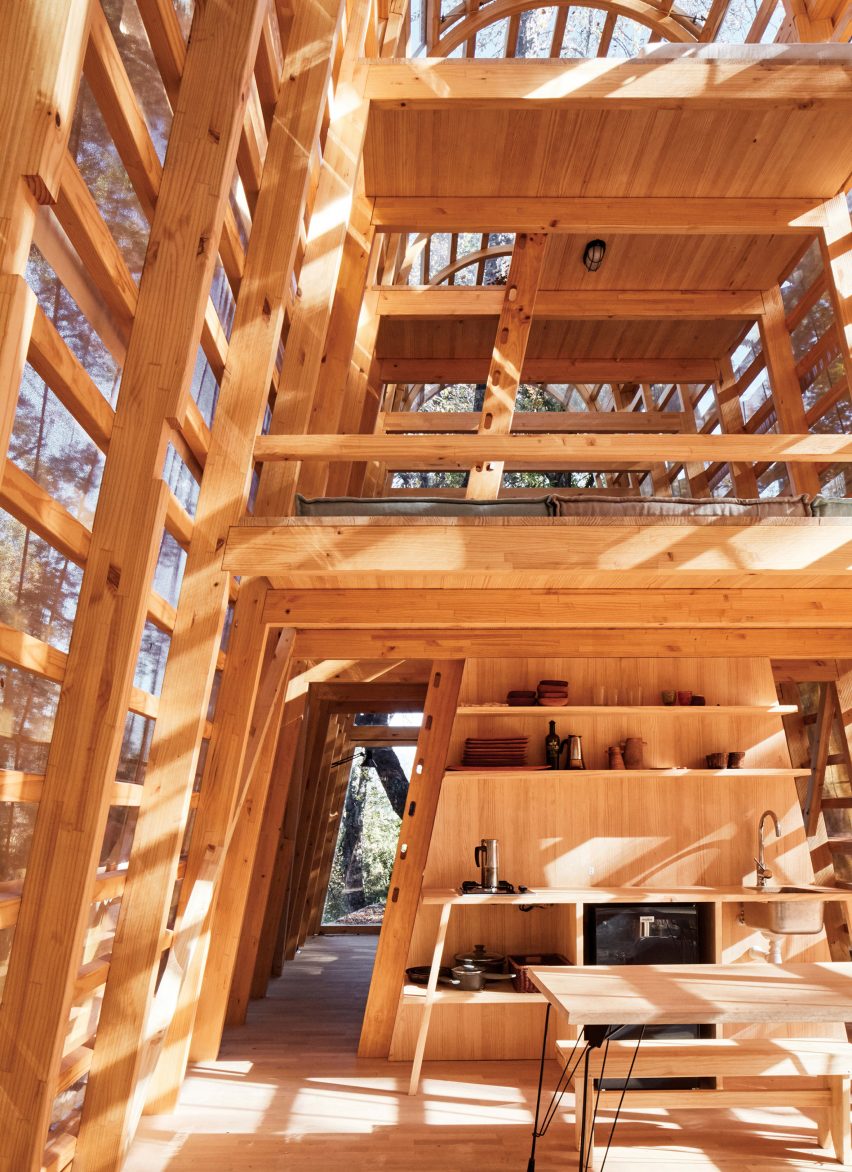
The ground floor of the house has a lounge with a wood-burning stove and a kitchenette at the front, a small bathroom in a wood volume in the middle, and a bedroom at the rear. The latter has glass doors that open onto a deck wrapped around a tree.
In total, the house has three floors that get progressively smaller higher up, due to its slanted walls. A ladder leads up to the first and second floor, which are both covered in large cushions to form places to relax while enjoying the forest views.
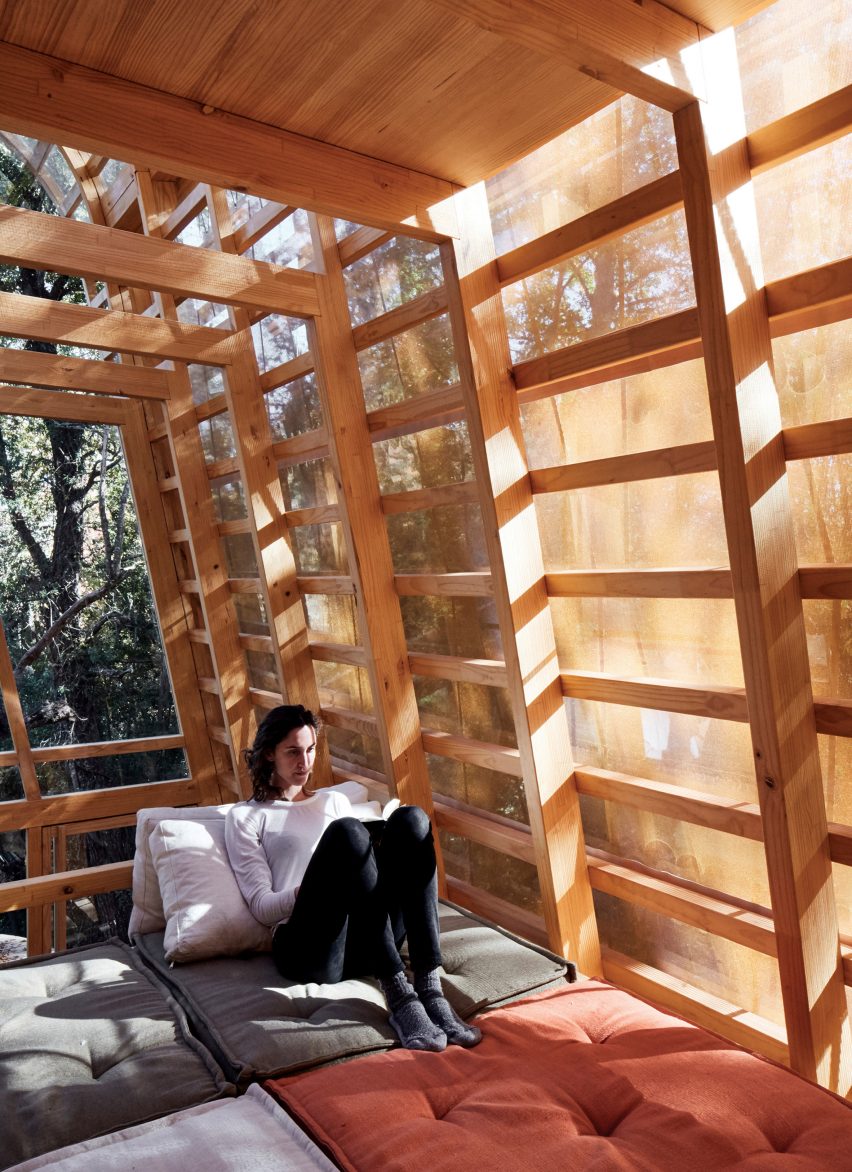
Founded by architect Guillermo Acuña in Lo Barnechea, GAAA studio has previously completed Casa Aguantao on Chile's Peninsula de Rilán, which is formed from offset shed-like volumes, and a residence in Malalcahuello with bright red roofs.
The two residences were among Dezeen's top eight Chilean houses of 2020, compiled as part of our review of the year.
Photography is by Cristobal Palma.
Project credits:
Carpenter / constructor: Luis Miranda
Fabric Engineer for exterior tensile membrane: Osvaldo Sotomayor (Desmontables)
Upholstery: Viviana Cortes
Architecture design and management: Guillermo Acuña, Pablo Castillo, Cristobal Montalbetti